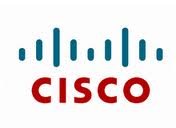  Cisco has identified opportunities and threats that could impact business and customers in five, ten or even twenty-five years’ time. Some of the key transformational trends identified this year are:
Internet of Everything (IoE) and M2M communications: The Internet of Things, and specifically increased automation in industrial systems and processes, coupled with big data, will bring tremendous advances in predictive diagnostics, with important applications in environments as diverse as retail and automotive safety. By 2022, M2M connections will account for 45 percent of total connections while person-to-machine (P2M) and person-to-person (P2P) will account for the remaining 55 percent. M2M already represents a significant market which continues to grow. Some of the most common M2M applications are telemetry (e.g. utility meters), telematics (e.g. car navigation systems), sales and payment (e.g. vending machines), and fleet management (e.g. cargo tracking).
Multi-vendor Clouds: Public, private and hybrid cloud environments based on static configurations will give way to dynamic and multi-vendor cloud environments. New technologies will allow Cloud service providers across multiple environments to adopt common Service Level Agreements (SLAs) to provide reliable and economical services.
Video in ultra-high definition: High definition video systems are becoming rapidly more affordable, presenting us with exciting opportunities for new video experiences on a previously unseen scale. Video technology in ultra-high definition (2160p and 4k - 8k- 4320p) will become imperative for smart phones, augmented reality glasses, tablets and other devices equipped with camera. With a resolution up to 16-times higher than current HD TV (1080p), their impact on the network requires the adoption of new technologies like P2P streaming, federated content distribution networks, HEVC (H.265) or HTTP adaptive streaming.
Context Aware Computing and Collaboration: The mash-up of big data and collaboration applications is going to drive the creation of a new wave of “context-aware” computing and collaboration experiences. Within 12-24 months, we will witness the rise of collaboration applications which automatically present to us information about the people and organizations contacting us. Furthermore, collaboration applications will leverage context-aware information and big data to gather useful historical information (documents, past interactions, recordings of meetings, even Facebook status) which are relevant to how teams work together, thereby preserving intellectual property and strengthening relationships and collaboration.
Real-time analytics: In the era of the data deluge, businesses demand fast access to information and immediate data insights in order to make quick and informed decisions, and to improve financial and operational performance. Real-time analytics have a broad area of application, spanning from financial markets to advertising, automation and security. Analyzing massive amounts of data almost on the fly implies high performance requirements on systems’ hardware and software.
Interactive collaboration through the web: The embedding of rich media collaboration within browsers – promises to transform the way businesses and organizations communicate and engage with customers. Within 12 months, we’re going to see retailers, financial services organizations, and other providers of high value services embedding Web Real Time Collaboration (WebRTC) into their web interfaces to transform the way they engage with customers.
New Internet architectures: With the number of connected devices set to rapidly expand from 10Bn today to 50Bn or more by 2020, current internet infrastructure needs to evovle to support this exponential growth of connected devices. We will see the rise of a new Internet architecture characterized by (a) ‘Fog Computing’ – the convergence of networking and compute at the edge of networks to create a more distributed intelligence that balances the need for centralized mega-scale data centers with more locally-useful computing and decision making capabilities, (b) a new type of networking architecture characterized by open APIs and by the embrace of developer communities who will create applications that optimize the integration of networks and management systems and business applications, (c) we will pass the peak of the SDN hype cycle and see real-world applications emerge in 2014, and (d) a new set of IT skillsets which accompany the convergence of computing, networking, storage and applications will emerge.
Security and Internet of Everything: As more and more devices – from wearable medical devices to devices that carry personal financial information – join the Web, privacy and security become more important than ever. In the coming 1-3 years, we will see a new form of multi-layered security emerge, replacing today’s model of “protecting the perimeter” with a combination of security technologies that includes localized clients embedded within devices or localized connections and centralized cloud-based intelligence which constantly scans to protect.
Self-Organizing Networks (SON): SON refers to a set of capabilities that increases the level of automation in network planning, operations and maintenance of LTE (Long Term Evolution) and next generation mobile networks. Today‘s mobile networks are largely human operated. SON is expected to decrease the capex and opex associated with them. These automated functions aim towards a self-configuring, self-optimizing and self-healing network, increasing network performance and quality by adapting to dynamic changes in network conditions. |